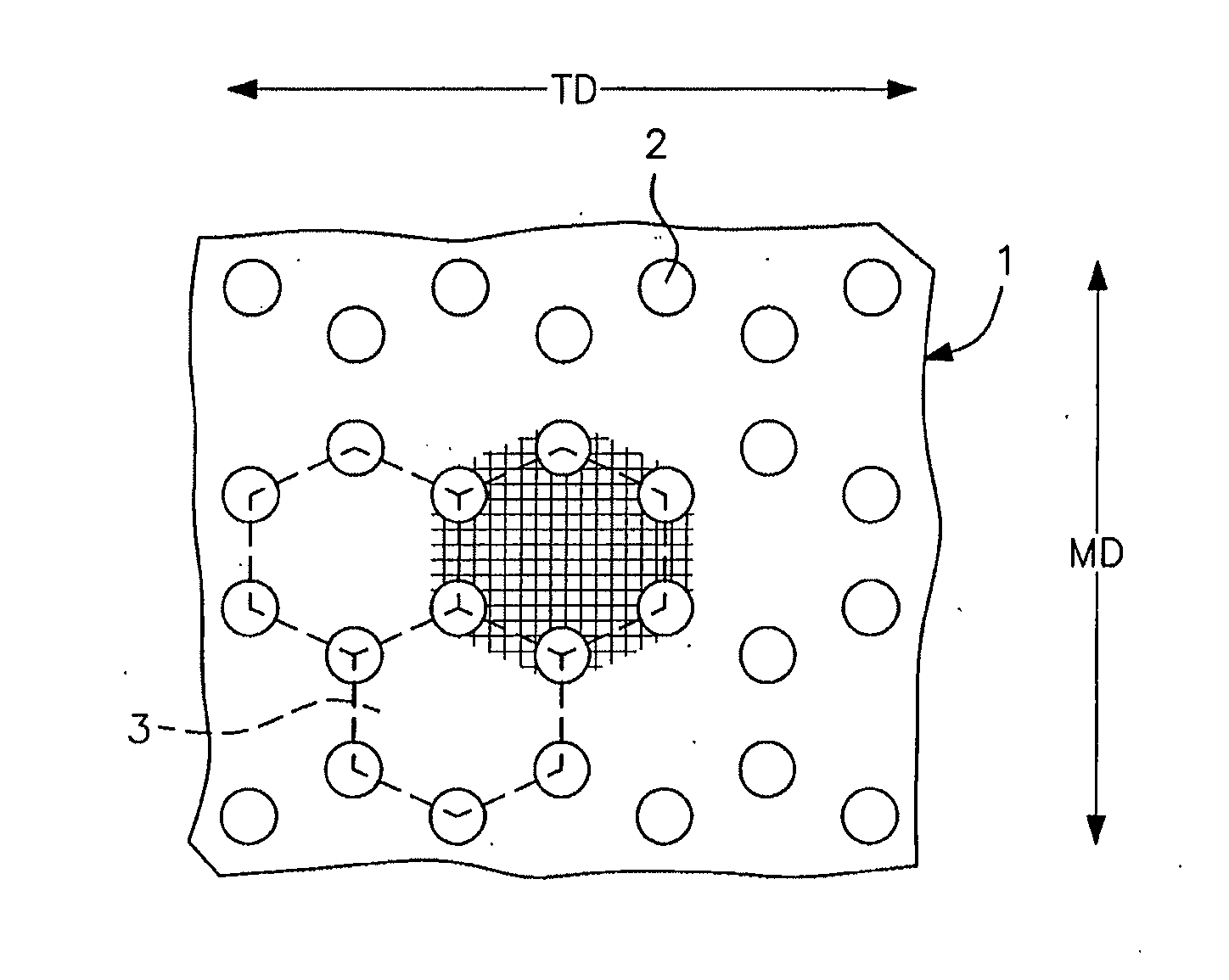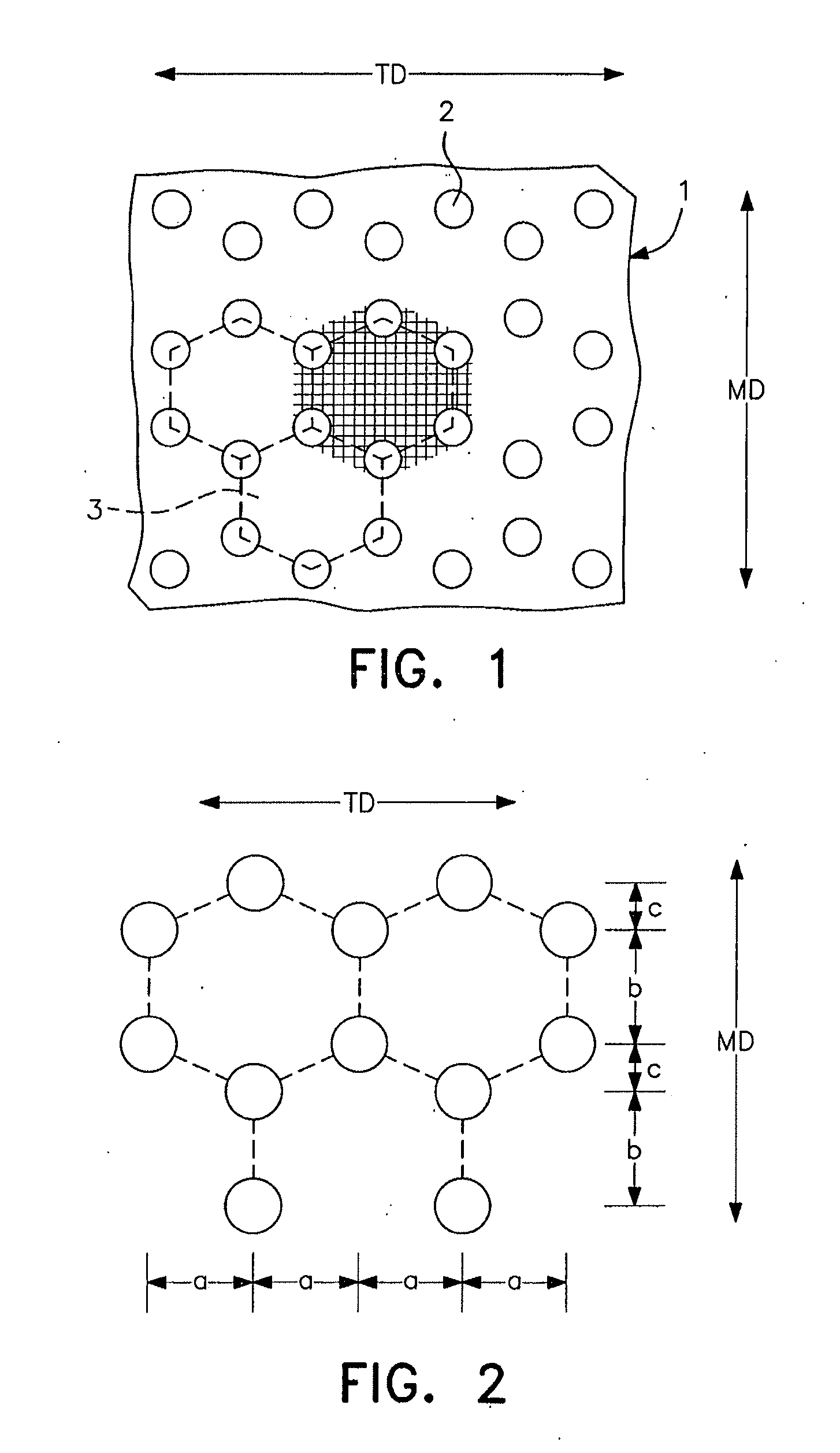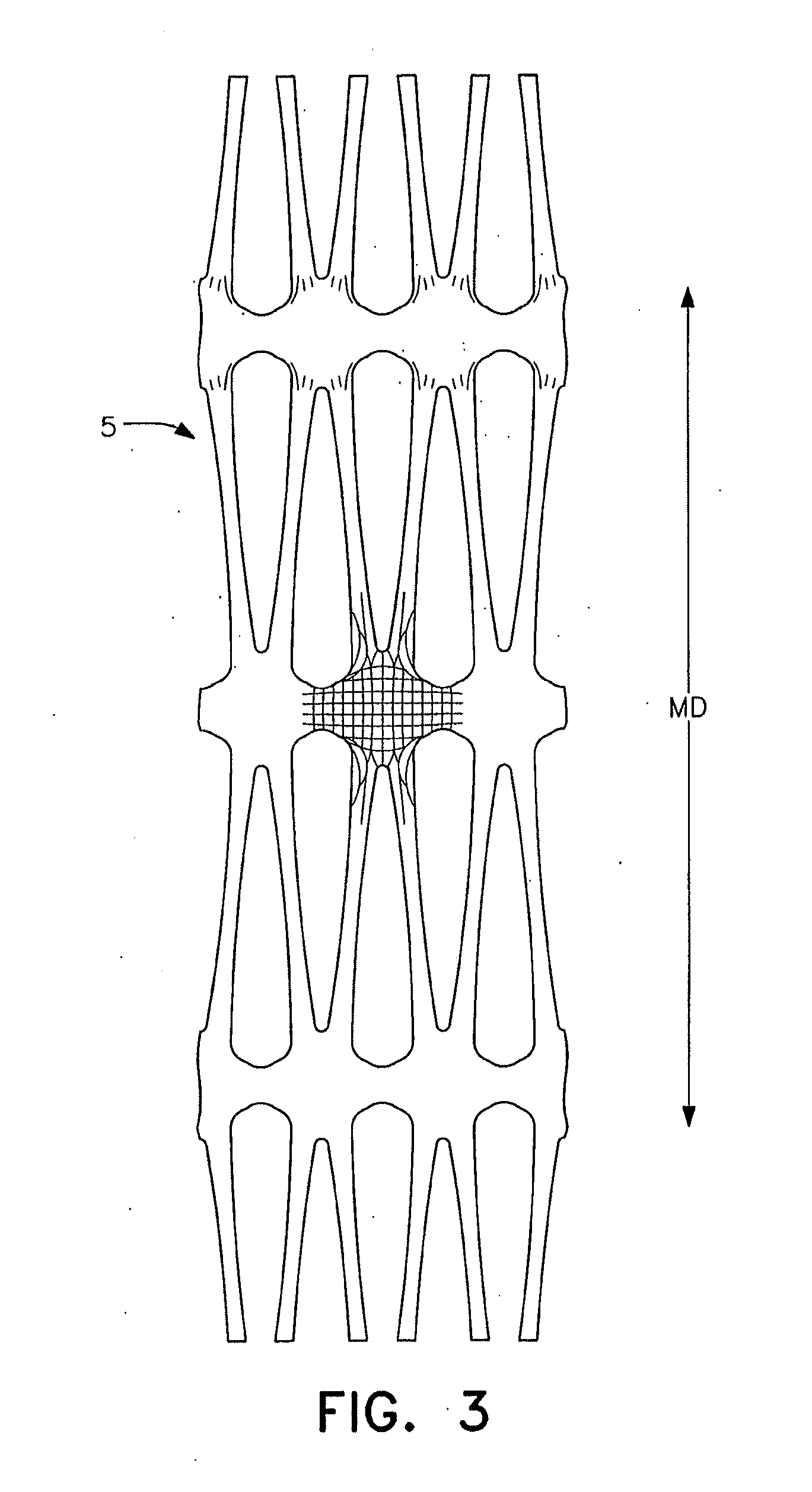Multi-axial grid or mesh structures with high aspect ratio ribs
a multi-axial grid and aspect ratio technology, applied in the field of polymeric grids and bonded composite mesh structures, can solve the problems of complex investigation of the mechanisms affecting the performance of geosynthetics, in particular integral geogrids, in granular layers under rolling wheel trafficking conditions, and cannot fully describe the ability of multi-axial geogrids, etc., to achieve high aspect ratio, improve performance, and increase confinement or interlocking
- Summary
- Abstract
- Description
- Claims
- Application Information
AI Technical Summary
Benefits of technology
Problems solved by technology
Method used
Image
Examples
examples
FIGS. 1 to 5 and Table 1
First High Aspect Ratio Samples
[0071]In a first set of high aspect ratio rib samples configured according to the present invention, the samples were prepared as described in accordance with the FIGS. 1-4 embodiment using the preferred strictly uniform starting material. The dimensions for the spacing of the punched holes, or pitch, noted as a, b, and c in FIG. 2, was varied. In these samples, the resulting multi-axial geogrid consisted of triangular apertures with ribs or strands that meet at each junction with angles at approximately 60°.
TABLE 1First Set of Geogrid Samples According to the PresentInvention with Triangular AperturesSheetthickness,DimensionDimensionDimensionRib AspectExamplemma, mmb, mmc, mmRatioC14.79.510.540.63C24.710.6311.524.430.38 13.26.196.712.581.06* 23.46.196.712.580.97 33.45.415.862.261.02 43.44.645.031.941.19 53.43.864.191.611.88 63.66.196.712.581.19* 73.86.196.712.581.2 846.196.712.581.26 945.415.862.261.391044.645.031.941.561143.86...
PUM
| Property | Measurement | Unit |
|---|---|---|
| aspect ratio | aaaaa | aaaaa |
| aspect ratio | aaaaa | aaaaa |
| aspect ratio | aaaaa | aaaaa |
Abstract
Description
Claims
Application Information
 Login to View More
Login to View More - R&D
- Intellectual Property
- Life Sciences
- Materials
- Tech Scout
- Unparalleled Data Quality
- Higher Quality Content
- 60% Fewer Hallucinations
Browse by: Latest US Patents, China's latest patents, Technical Efficacy Thesaurus, Application Domain, Technology Topic, Popular Technical Reports.
© 2025 PatSnap. All rights reserved.Legal|Privacy policy|Modern Slavery Act Transparency Statement|Sitemap|About US| Contact US: help@patsnap.com



